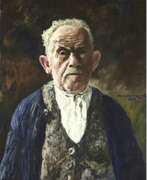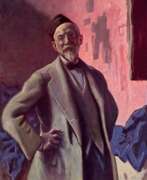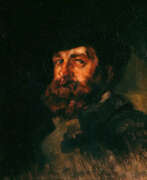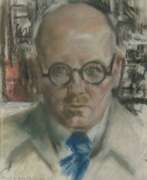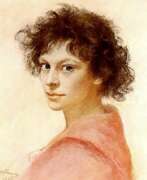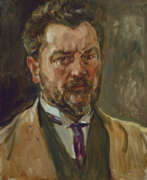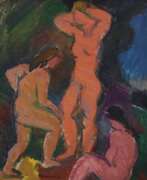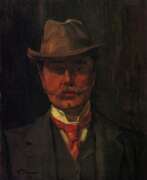Impressionism Berlin Secession
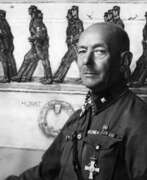

Ludwig Julius Christian Dettmann was a German artist of the late 19th century and the first half of the 20th century. He is known as one of the leading representatives of the Secession in Germany.
Dettmann began his career as an illustrator and in 1895 became a professor at the Berlin Academy of Arts. He then switched to landscape painting, worked in oil and watercolor techniques and became one of the first Impressionists in Germany. In 1898 the artist joined the Association of German Free Artists and co-founded the Berlin Secession. In 1900 Dettmann became director of the Königsberg Academy of Arts and promoted the development of the Nida colony of landscape artists on the Curonian Spit.
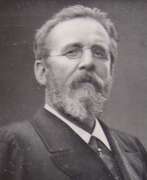

Theodor Joseph Hagen was a German painter and art teacher.
He was one of the founders of German Impressionism. After trying out several styles during his early years, he became attracted to the plein-air painting of the French Barbizon School.
From 1893, he was a member of the Munich Secession and, from 1902, the Berlin Secession.


Hugo Curt Herrmann was a German Impressionist and Neo-Impressionist painter; associated with the Berlin Secession. Although he was primarily interested in painting portraits, he also spent some time with the history painter Wilhelm von Lindenschmit at the Academy of Fine Arts, Munich. In 1885, he set up as a portrait painter in Munich and befriended the art critic Richard Muther. In 1893, he moved to Berlin, where he opened a drawing and painting school for women. In 1898, he became one of the founding members of the Berlin Secession and sat on its advisory board. He operated his school intermittently until 1903, when he joined the Deutscher Künstlerbund. He also worked to promote younger artists, such as Arthur Segal, Alexej von Jawlensky, Adolf Erbslöh and others associated with Die Brücke. He was named a Professor at the Royal Academy of Arts in 1917.
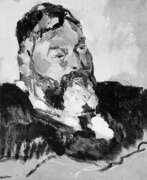

Otto Hettner was a German painter, graphic artist, illustrator and sculptor.
Hettner studied at the Academy of Fine Arts in Karlsruhe with Robert Petzelberger and at the Académie Julian in Paris, then lived in Florence for a year and studied again, this time at the Dresden Academy of Fine Arts. In 1916 he became a member of the executive committee of the Free Secession, and the following year he became director and professor at the Dresden Academy of Fine Arts, where he worked until 1927.
Otto Hettner illustrated various books for well-known publishing houses. After the artist's death, the Nazis, who came to power in Germany, considered Hettner's works degenerate, and in 1937, as part of the campaign "Degenerate Art" 15 of his works were confiscated from museums.


Gotthardt Kuehl was a German painter of the late nineteenth and early twentieth centuries. He is known as an impressionist painter and teacher.
Gotthardt Kuehl studied painting at the Dresden and Munich Art Academies, as well as in Paris, where he lived for two years, and on study trips to Italy and the Netherlands. He created cityscapes, architectural sketches and paintings with social themes, gaining recognition in the early stages of his work.
Kuehl participated in the founding of several artists' associations, including the Elbians, and was a member of the Berlin Secession. He continued to create and teach actively until his death.
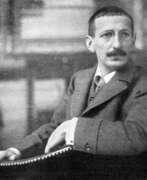

Walter Leistikow was a German painter of the late nineteenth and early twentieth centuries. He is known as a landscape painter, graphic artist, designer and art historian, a representative of the Jugendstil.
Early in his career Leistikow was one of the founders of the art group "Association of Eleven", which advocated modern art, rejecting academism. His landscapes, inspired by the Barbizon School, evolved toward simplification, sometimes with Art Nouveau influences. The artist sought to stylize landscapes, eschewing excessive detail in favor of silhouettes and blurred lines.
He also designed furniture, carpets and wallpaper, and in 1902 created trading cards for the Stollwerck chocolate company.
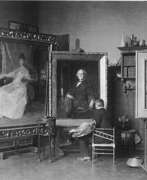

Reinhold Ludwig Richard Lepsius was a German painter of the late nineteenth and early twentieth centuries. He is known as a painter, graphic artist, portraitist, representative of the Berlin Secession and German Impressionism.
Lepsius was one of the first artists who used photography to create portraits. The master became famous for his portraits of famous personalities such as archaeologist Ernst Curtius, philosopher Wilhelm Dilthey and poet Stefan Gheorghe. His membership in the German Artists Association strengthened his position on the art scene. Unfortunately, many of his works were lost during World War II.
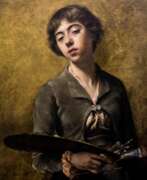

Sabine Lepsius was a German painter of the late nineteenth and first half of the twentieth centuries. She is known as a painter, portraitist, representative of realism.
Sabine Lepsius was the wife of portrait painter Reingold Lepsius and together with him was a popular artist of his time. Her salon in Berlin was a famous meeting place for many artists and writers. She was also one of the founders of the Berlin Secession and exhibited with it until 1913.
Only a small part of Lepsius' oeuvre has survived: most of the 280 portraits she created depicting members of the Jewish community were lost or destroyed during World War II.
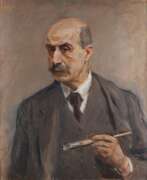

Max Liebermann was a German painter and printmaker, and one of the leading proponents of Impressionism in Germany and continental Europe. In addition to his activity as an artist, he also assembled an important collection of French Impressionist works.
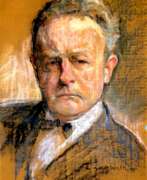

Heinrich Eduard Linde-Walther was a German painter and illustrator. He studied painting at the Academy of Fine Arts in Munich with Gabriel von Hackl and Paul Hoecker. Also at the Académie Julian in Paris. Member of the Berlin Secession since 1902.
Heinrich Eduard Linde-Walter was mainly known for landscapes and still lifes, but also did numerous children's portraits and illustrations for children's stories. Most of his works were commissioned by individual clients and remain in private ownership.


Hans Meid was a German painter, graphic artist and illustrator.
Meid attended an art and craft school in Karlsruhe, and then at the art academy he became a pupil of impressionist Wilhelm Trübner (1851-1917) and realist Walter Kontz (1872-1947). In 1907 the Meissen porcelain manufactory engaged him as a designer; in 1908 he settled in Berlin as a freelance artist. His success was recognized with the Villa Romana Prize (1910) and membership in the Berlin Secession (1911). In 1919 Meid became a lecturer in printmaking at the University of Fine Arts in Berlin. In 1927 he was elected a full member of the Prussian Academy of Fine Arts, where he also headed the graphic arts workshop.
In the first decades of the twentieth century Hans Meid, together with his close friend Max Slevogt, was one of the leaders of Impressionism. He created an extensive collection of etchings, lithographs and engravings, a large number of illustrations for works of world literature, including Cervantes' Don Quixote, Goethe's Selective Affinity and many others. He designed book covers for 44 publishers (notably Schünemann and S. Fischer). He later added ink drawing, watercolor and oil painting. In 1948 Hans Meid became a lecturer at the State Academy of Fine Arts in Stuttgart, he was also a member of the German Artists' Association.


George Mosson was a German painter of the late nineteenth and first third of the twentieth centuries of French origin. He is known as a painter, famous for his floral still lifes, landscapes and portraits.
George Mosson studied at the Academy of Fine Arts in Berlin and the Weimar Art School. In 1892 he co-founded the artists' association Vereinigung der XI (Association of the Eleven), and in 1898 he became a founding member of the Berlin Secession, which was created in opposition to academic art. The master later joined the Free Secession and was a member of the German Artists' Union. Mosson actively exhibited his work in Berlin and left a significant artistic legacy.


Ernst Oppler was a German painter of the late 19th and first third of the 20th centuries of Jewish origin. He is known as a painter, graphic artist and printmaker, a representative of Impressionism.
Oppler was a co-founder of the Berlin Secession art movement and a member of the German Artists' Union. His work reflects the transition from nineteenth-century art to classical modernism during Wilhelminianism and the Weimar Republic. Oppler is considered a significant portraitist, including many self-portraits, as well as a talented etching artist. His fascination with Russian ballet resulted in significant works, making Oppler a key German artist in the depiction of stage dance in the twentieth century. Researchers estimate that the master was the author of 271 paintings and 531 graphic works.
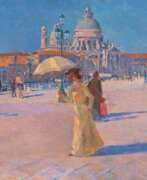

Max Schlichting was a German impressionist painter, father of the famous marinist Waldemar Schlichting. He studied painting at the Prussian Academy of Arts and the Académie Julian in Paris.
Max Schlichting also worked as a professor and art official. He is known for his French subjects and his depictions of landscapes in Flanders and the Netherlands. Schlichting was a member of the Berlin Association of Artists and the Berlin Secession.


Franz Skarbina was a German painter of the last quarter of the nineteenth and early twentieth centuries. He is known as an Impressionist painter, draughtsman, graphic artist and etching artist.
Franz Scarbina came under the influence of the Impressionists early in his career, in this style he depicted city life, salons, and beach scenes. The artist worked as a teacher at the Berlin Academy of Arts, headed the anatomical drawing department at the school of the Museum of Applied Arts in Berlin. The most fruitful for the master were 1882-1886 years - he, living in Paris, created many works, visited Africa, Belgium and Holland.
Skarbina was one of the founders of the art group and a participant of the Berlin Secession. A street in Berlin is named after him.


Rudolf Tewes is a German impressionist painter, member of the Berlin Secession and the Golden Cloud Association.
Tewes received his art education at the Munich Academy of Fine Arts, then traveled extensively in Italy, Spain, France and South America. Tewes's work and style were strongly influenced by Vincent Van Gogh, whose works he took as artistic models to emulate.
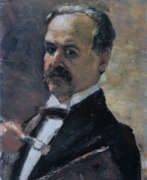

Lesser Ury was a German painter of the late nineteenth and first third of the twentieth centuries of Jewish origin. He is known as an impressionist painter, graphic artist and printmaker, a representative of the Düsseldorf school of painting.
Ury painted rural and urban landscapes, still lifes and monumental paintings on biblical themes. His works depicting the streets of Berlin and views of Brandenburg are particularly notable. Ury mastered both oil colors, creating floral paintings and urban scenes, and pastels, conveying an atmosphere of air and light in landscapes.


Leo von König was a German painter of the first half of the twentieth century. He is known as a portrait painter, teacher and one of the leading representatives of the Berlin Secession artists' movement.
Von König early in his career was fascinated by Impressionism, influenced by his study of painting in Paris and Berlin. He created portraits of famous personalities in Germany, including cultural figures as well as one of the Nazi leader Goebbels. Von König also worked as a teacher and ran a workshop class at the school of the Berlin Museum of Applied Arts. His works are preserved in the art museums of Braunschweig and Düsseldorf.
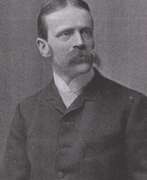

Fritz von Uhde was a German painter of the last third of the 19th and early 20th centuries. He is known as a religious and genre painter, who combined realism and impressionism in his work.
Von Uhde, creating genre and religious paintings, sought to connect the New Testament with modernity, depicting as characters representatives of the lower strata of the population. He is considered the forerunner of modern church art. Critics and the public often dismissed his work for being "vulgar," but admirers compared his style to Rembrandt for its naturalness and connection to life.


Emil Rudolf Weiss was a German painter, typographer, graphic designer and poet.
Weiss studied at the Karlsruhe Academy of Fine Arts, then at the Julian Academy, and published his first collection of poetry. In 1895, he began his work in book arts by designing typefaces for the art magazine Pan. He also worked on the design and illustration of various publications. In 1907, he joined the Berlin Secession.
Weiss's first graphic works were influenced by Symbolism and Jugendstil, as well as the works of Edvard Munch and Felix Vallotton. From 1910, Weiss increasingly defined himself as a painter, creating still lifes, portraits, landscapes and genre scenes. Weiss developed many typefaces and coin designs. In 1907-33 Weiss taught at the Kunstgewerbeschule in Berlin, which from 1924 was merged with the State Higher School of Art. From the 1920s, Emil Rudolf Weiss was the representative of the Flechtheim Gallery.
The Nazi regime subjected Emil Weiss to persecution, banning his paintings as well as teaching, and he died of a heart attack in 1942.
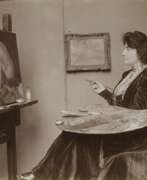

Julie Wolfthorn was a German artist, representative of the Symbolic Art Nouveau movement and member of the Berlin Secession. She studied painting in Berlin and then in Paris.
Julia Wolfthorn worked a lot and fruitfully, took part in exhibitions. She is widely known for her portraits of the poet Richard Demel, the family of the writer Gustav Landauer, the family of the architect Hermann Muthesius, the actress Tilla Dürje, and other Berlin celebrities of the time.
After the Nazis came to power, Julia Wolfthorn remained in Berlin, working with the 'Union of Jewish Culture'. In 1942 she and her sister were deported to Theresienstadt concentration camp.
